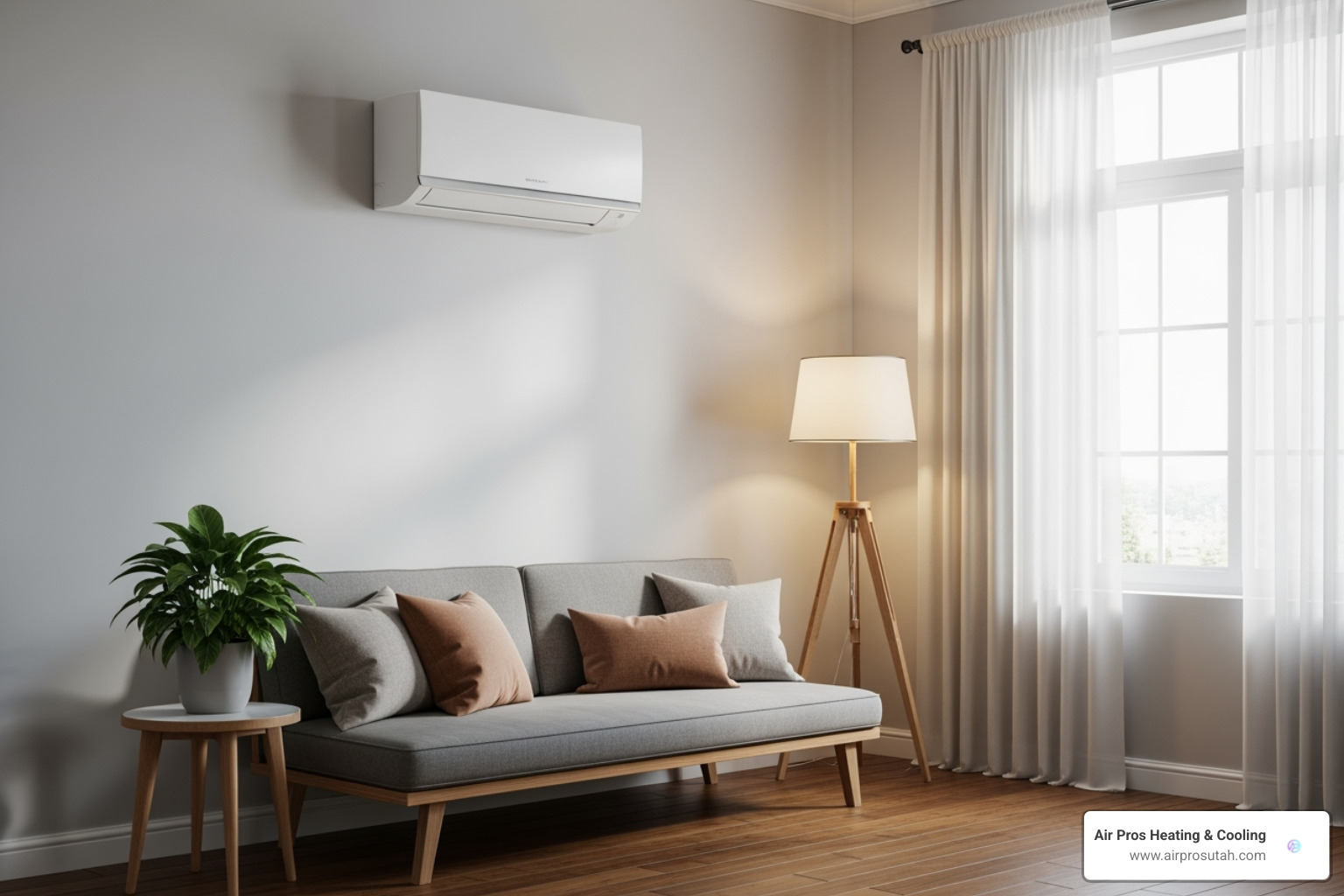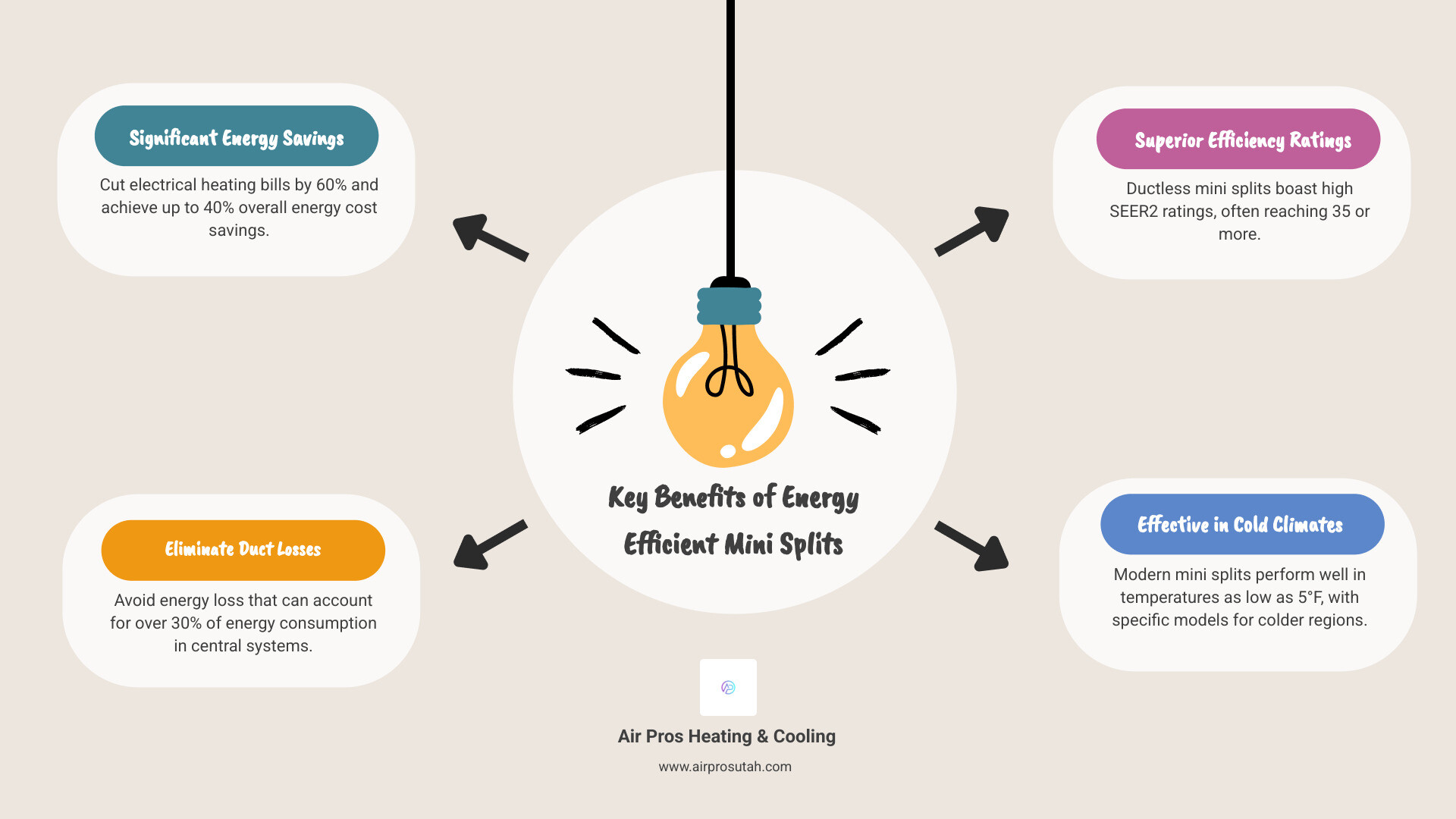
Stay Chill, Save Green: Best Energy Efficient Mini Splits
The Future of Home Comfort is Ductless
If you're looking for a smarter, more flexible way to heat and cool your home, an energy efficient mini split system is the modern solution you've been searching for. These innovative systems offer a wealth of benefits, particularly when it comes to slashing energy consumption and elevating your home's comfort. Consider these powerful advantages:
- Up to 40% Energy Cost Savings: Compared to older, less efficient central HVAC systems, an ENERGY STAR certified mini split can dramatically reduce your energy consumption. This translates directly into significant savings on your monthly utility bills.
- Elimination of Wasted Energy: Traditional systems rely on a network of ducts to distribute air. Unfortunately, these ducts, often located in unconditioned attics or crawlspaces, can have leaks, poor connections, or inadequate insulation, leading to over 30% of your conditioned air being lost before it ever reaches your rooms. Ductless systems deliver air directly, eliminating this major source of energy waste.
- Superior Efficiency Ratings: The performance of heating and cooling systems is measured by ratings like SEER2 (for cooling) and HSPF2 (for heating). Ductless mini splits consistently achieve some of the highest ratings in the industry, with some models boasting SEER2 ratings of 35 or even higher, far surpassing the minimum standards for central air.
- Drastically Lower Utility Bills: For homes that rely on electric resistance heating (like baseboard heaters or electric furnaces), the savings are even more profound. An ENERGY STAR certified mini split can reduce heating costs by as much as 60% and cut cooling costs by 30% compared to standard room air conditioners.
- Exceptional Cold Climate Performance: Gone are the days when heat pumps struggled in the cold. Modern "cold-climate" mini splits are engineered with advanced technology to provide reliable and efficient heating even when outside temperatures plummet to 5°F or below, making them a viable and powerful solution for Utah's cold winters.
Many homeowners across the Salt Lake City area are all too familiar with the challenges of our unique climate—from sweltering summer days to frigid winter nights. Older homes, in particular, often suffer from inconsistent temperatures, drafty rooms, and shockingly high utility bills from outdated HVAC units. Mini splits provide a sleek, whisper-quiet, and powerful solution to these problems. By allowing you to create personalized comfort zones in specific rooms, they deliver targeted heating and cooling without the need for bulky, inefficient ductwork.
This guide will walk you through everything you need to know about these innovative systems. We will show you how they work and how they can make your home more comfortable and save you money.
I'm Alex Wiltz, founder of Air Pros Utah Heating & Cooling. I've spent my career gaining deep technical expertise in HVAC, starting with a specialized trade program in high school. My passion is helping homeowners find reliable, high-quality solutions, and our team is dedicated to designing and installing the perfect energy efficient mini split system for your home's unique needs.

The Efficiency Edge: Why Mini Splits Outperform Traditional HVAC
So, what makes an energy efficient mini split system such a standout for modern homes? It all comes down to their clever design and cutting-edge technology. Imagine a heating and cooling system that doesn't need all those bulky air ducts running through your walls and attic. That's exactly what a mini split is! It has two main parts: an outdoor unit (the compressor/condenser) and one or more sleek indoor units (the air handlers). These two parts simply connect through a small conduit – a tiny pathway for the power, refrigerant lines, and drain. This direct connection is a game-changer for how efficient your home comfort can be.
The real magic of an energy efficient mini split lies in its ductless nature. Think about traditional central air systems. They push air through a whole network of ducts to reach every room. The problem? A lot of that conditioned air can escape through leaks, cracks, and poor connections in those ducts, especially if they run through unheated or uncooled spaces like attics or crawl spaces. In fact, duct losses can account for more than 30% of energy consumption in central systems, with an average house losing 25% or more of its energy this way. It's like paying to cool or heat your attic! With mini splits, this energy waste is virtually eliminated because there are no ducts to lose energy through. That's a huge reason why they're so incredibly energy efficient.
But it's not just about missing ducts. Mini splits also use some really smart technology called inverter technology and variable-speed compressors. Older air conditioners and furnaces usually just turn completely on or completely off, blasting air at full power until the desired temperature is reached, then shutting down with a jolt. It’s a very "all or nothing" approach that causes noticeable temperature swings and uses a large surge of electricity every time it starts up. An inverter-driven compressor, however, can precisely adjust its speed, much like a dimmer switch for a light. It can run at lower speeds for longer periods, gently maintaining your perfect temperature without constantly cycling on and off. This not only saves a tremendous amount of energy but also keeps temperatures more consistent, reduces wear and tear on the system, and operates much, much quieter.
This precise control also extends to zoned temperature control. Each indoor unit in a mini split system has its own thermostat, creating an independent climate zone. This means you can set different temperatures for individual rooms or areas of your home. Why pay to blast cold air into an unused guest room or keep the entire house at 68 degrees when you're only using the living room and kitchen? This flexibility allows you to condition only the spaces you're actively using, leading to significant energy savings and personalized comfort for everyone in your home.
Mini Splits vs. Central Air: A Head-to-Head Comparison
When we talk about making your home more energy efficient, it's natural to compare an energy efficient mini split system with traditional central air. While central air has been the standard for decades, mini splits offer compelling advantages that make them a superior choice for many homeowners looking to save on energy bills and enjoy better comfort.
Let's look at how they stack up:
First, consider SEER2/HSPF2 Ratings. These acronyms stand for Seasonal Energy Efficiency Ratio 2 and Heating Seasonal Performance Factor 2, and they are the official report cards for cooling and heating efficiency. The higher the number, the less energy the unit uses. Mini splits almost always have much higher ratings than central air systems, thanks to their ductless design and inverter technology. You can browse a list of certified high-efficiency models on the ENERGY STAR® website to see just how impressive their scores can be.
Next, think about Installation Complexity. Installing a central air system, especially in a home without existing ductwork, is a major construction project. It often means tearing into walls and ceilings to run the ducts, which is messy, disruptive, and time-consuming. Mini splits, on the other hand, are far simpler to install. They only require a small, three-inch hole through an exterior wall to connect the indoor and outdoor units, meaning less disruption to your home and a much quicker setup.
When it comes to Upfront Cost vs. Operating Cost, the conversation gets interesting. A central air system might seem less expensive initially, particularly if your home already has ductwork. However, it's crucial to look at the total cost of ownership. An energy efficient mini split system's superior efficiency means significantly lower operating costs over its lifespan. The monthly savings on your energy bills quickly add up, often offsetting any higher upfront price and delivering a better long-term return on your investment.
Then there's Zoning Capability. This is where mini splits truly shine. With central air, you typically set one temperature for the whole house, leading to rooms that are too hot or too cold. Mini splits demolish this one-size-fits-all approach. Each indoor unit creates its own zone, giving you ultimate control over individual rooms. Want your bedroom cooler for sleeping and the living room a bit warmer? No problem!
Finally, let's talk about Air Quality. Most central systems have a single filter located at the main air handler, which attempts to clean the air for the entire house. Mini splits often come with advanced, multi-stage filtration systems built into each indoor unit. This means they are constantly cleaning the air right at the source, doing a better job of trapping dust, pollen, pet dander, and other allergens in the rooms you use most.
To dive deeper into these differences and see which system might be the best fit for your home, you can learn more about the differences between mini-splits vs central air.



.jpg)